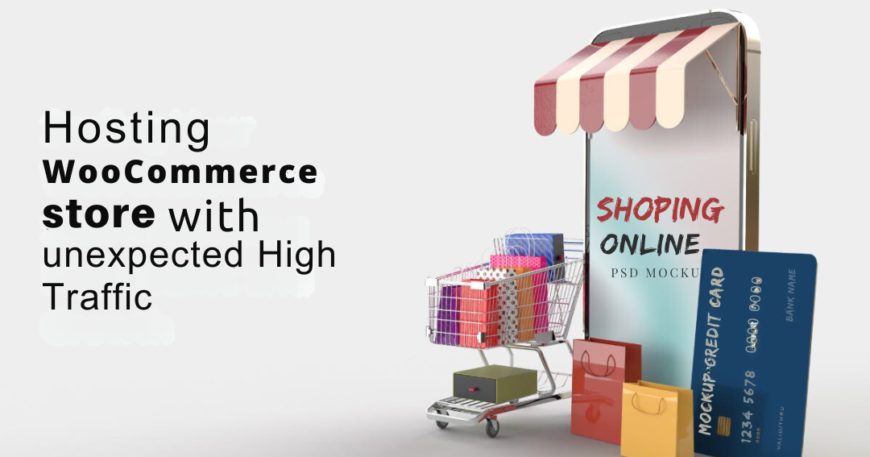Hosting WooCommerce Stores with Unexpected High Traffic
What do you already know about hosting WooCommerce stores? You may have already read some of my articles on selecting a WordPress server or how to approach WooCommerce when it comes to hosting WooCommerce stores. Maybe though, you haven’t. Or perhaps you read Carl Alexander’s razor-sharp post about adopting a serverless architecture for a WooCommerce store. While I think it’s great, the article makes several assumptions about containers that I don’t think are necessary. Alternatively, it is possible that you simply came to the WooCommerce website, searched for hosting, and saw a number of choices, but you were unsure which to choose. Could a host that only costs $1 per month actually handle traffic? (hint: you already know the answer to that one). In actuality, it’s possible that you have no knowledge about WooCommerce store hosting – especially when it experiences a surge in traffic. So let’s start with some basics… Understanding the architecture of a high-traffic WooCommerce store All WooCommerce stores share identical components. Imagine it as a stack of books, with the hardest book to reach being at the bottom and the easiest book at the top. Cache Plugin or External Cache WooCommerce Themes / Plugins WooCommerce Software WordPress Software Apache or Nginx Web Server Software (or both) PHP Object Cache Database It wouldn’t matter if I drew you an architecture diagram. Just keep in mind that there are layers, which are accessed in this order, and that a visitor arrives at the top far in advance of reaching the bottom. This is where hosting WooCommerce stores raises the performance dynamics. You want all of your consumer requests to end up in the top layer for everything that isn’t your actual cart. Although you may not know what caching is, you may have heard of it. Are you able to recall playing Sardines? One individual runs away. After that, whomever discovers them next goes to hide with them. After that, the next individual discovers them and hides with them. Finally, everyone in the group is concealed together. A cache is comparable to a group snapshot. You’re scratching your brain, I know. But this is the reason I use this specific example. The more individuals you hide with in a sardine can make things uncomfortable and expensive (especially if you didn’t pick a smart position). The same holds true for hosting WooCommerce stores, though. The cost increases with each layer you have to go through in order to obtain additional information (all the way down to the database). In other words, the cache layer at the top is a unique memory address that stores all of the information in one location so you don’t have to go up and down the stack to access it. similar to having a group photo. Okay, I should have used different examples. My argument is that, aside from the cart, caching is fantastic. For you cannot afford to own a picture of someone else’s group. You wish not to see the cart of another person. You desire your own. Therefore, a high traffic WooCommerce store’s architecture makes extensive use of cache and only forgoes it when absolutely necessary. You will be able to scale to have a large number of concurrent users accessing your business at once if you can get the majority of your traffic to go through the cache, never force PHP to function (except from carts), and only infrequently hit the database. Your options for scaling the hosting for WooCommerce stores However, what occurs when there is a lot of traffic and people are loading items into carts? What occurs if your cache is unable to process everything? At that point, you need to consider your options for hosting WooCommerce stores with a lot of traffic. Pagely has been doing this for a while. They accomplish this by understanding the architecture and making all the necessary adjustments, and by ensuring that you have sufficient scalable infrastructure to manage traffic (they operate on top of AWS). WP Engine was concentrating on other things for a very long time. They have the digital experience as their main concern. However, they just made a U-turn and are once more concentrating on WooCommerce stores. Although their technical staff is quite strong, you should probably speak with one of their sales representatives (I’m not sure which ones they now have) to choose the best size plan because I doubt you’ll want to operate your store on the lowest tiers. However, Pressable is my top pick and the place I direct all of my WooCommerce clients. How does Pressable stand out? First, the infrastructure for Pressable is the same one for WordPress.com – so that means you’re hosting on the same technical underpinnings that support millions of other WordPress websites. They are capable of autonomous burst scaling, which essentially means that your servers will remain stable regardless of the volume of traffic they receive. Secondly, they consistently allocate funds towards their hardware. Consider this: the engine that powers your WooCommerce website is its foundation. However, some locations have brand-new engines, while others are using vehicles that my dad drove when he was a child to get around town. This is due to the fact that hosting providers like to make gradual updates. Thus, it will seem great to join up immediately after an investment, but it will gradually get slower. Thirdly, enquire about Pressable’s replications of data centers. It matters a great deal how reliable their infrastructure is. Everyone collapses. Each and every host and website. However, if replication is integrated into your data center, it just moves you somewhere. This might be provided by many hosts, but it would be more expensive (particularly those who host on different underlying platforms like Google). Thus, they seldom do. Finally, these guys receive assistance. Therefore, if you have any questions about caching or anything else, or if you feel like your store is slowing down, you can count on them to respond to you not only promptly






